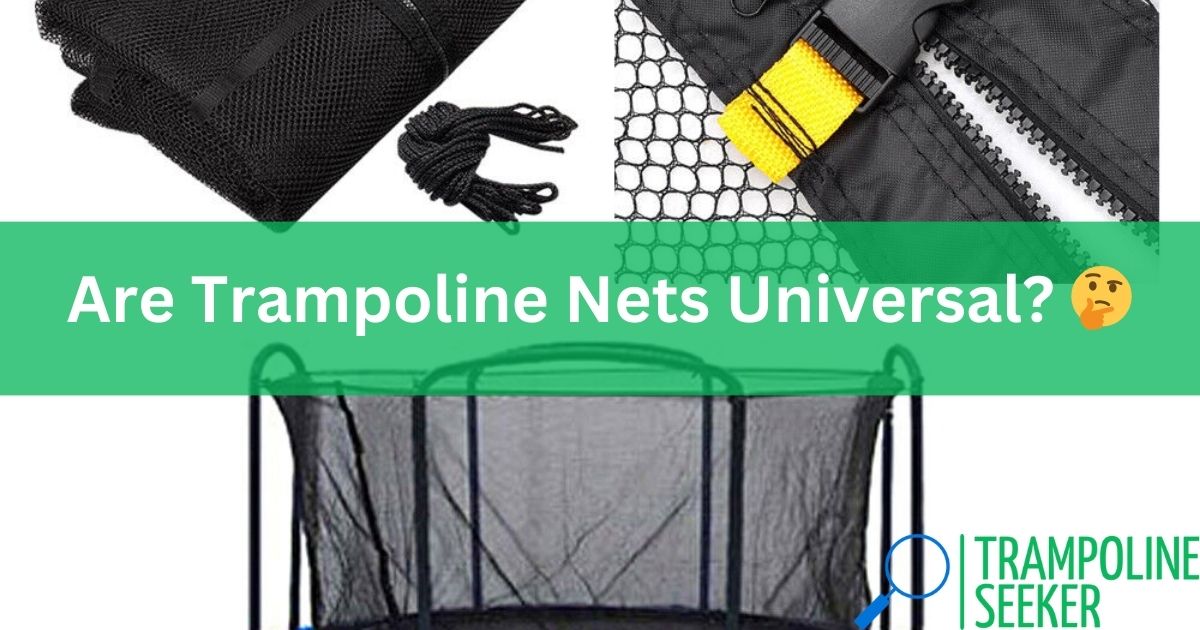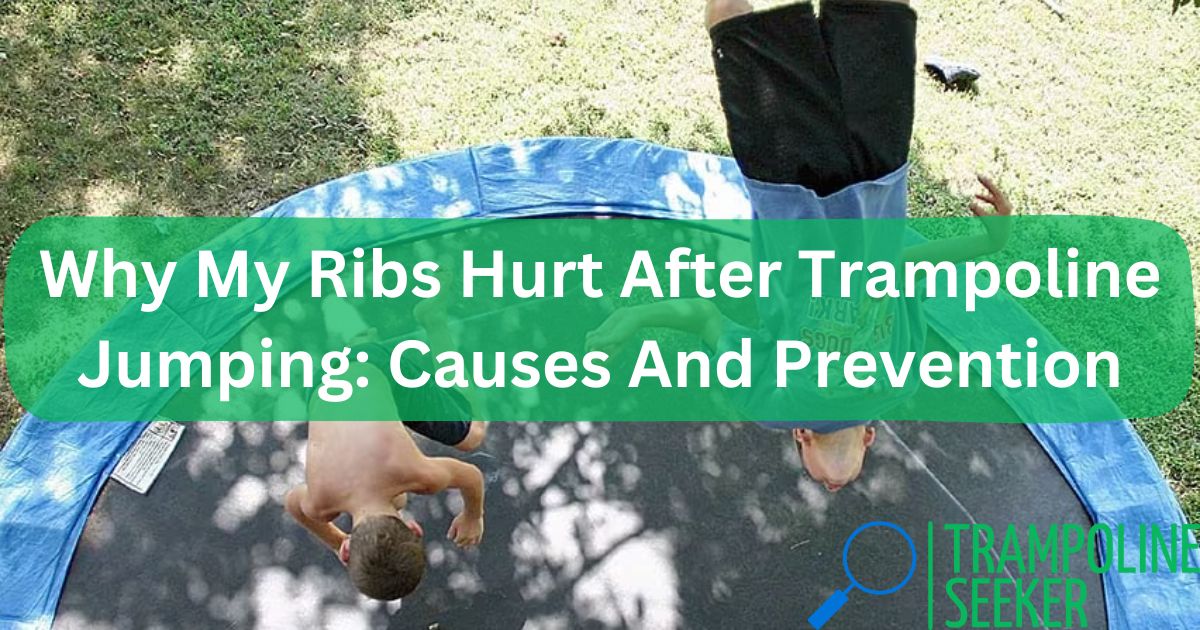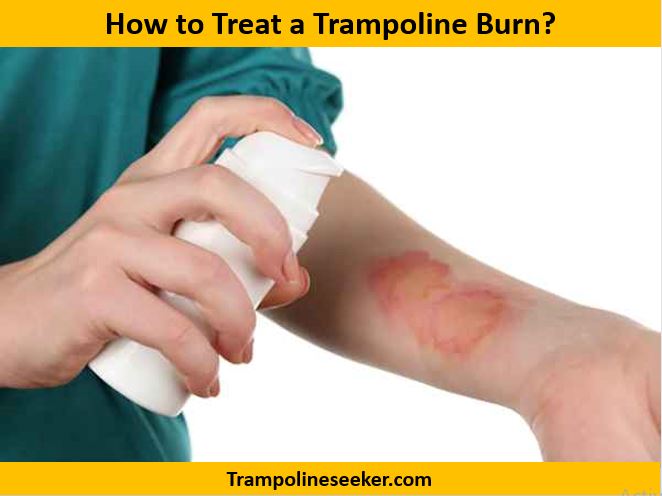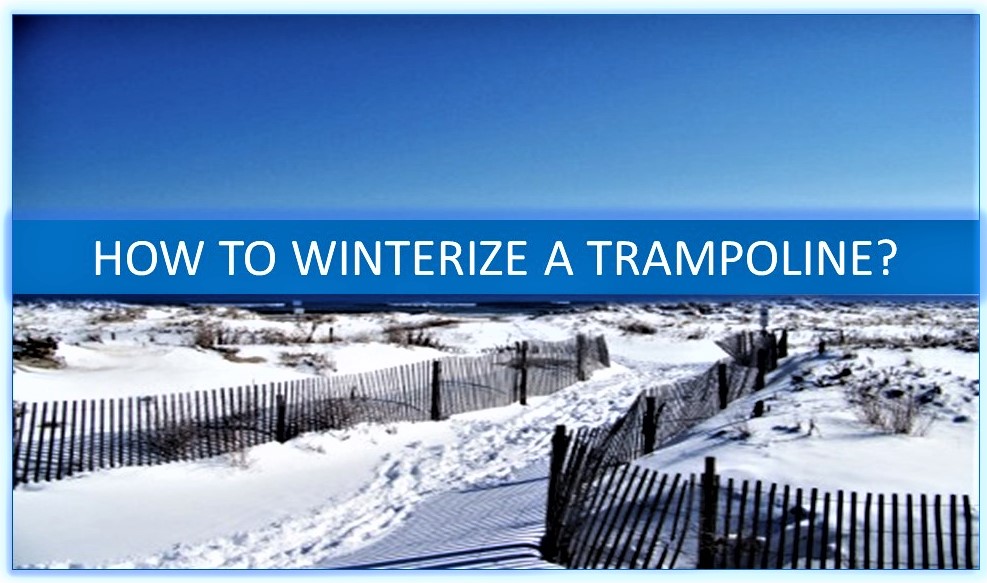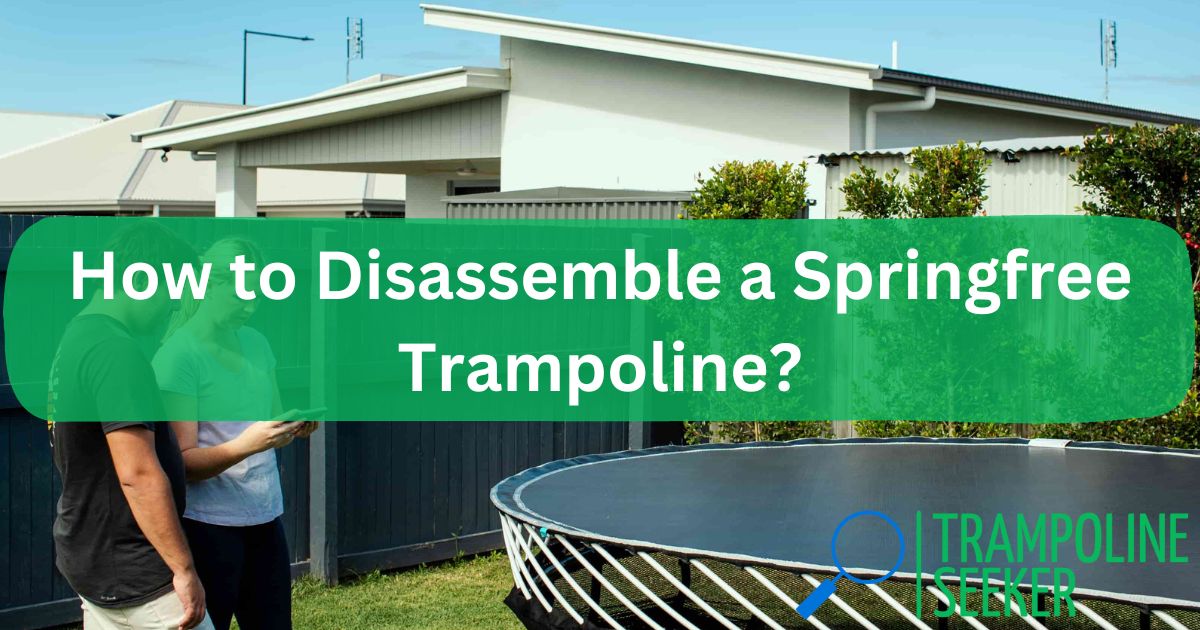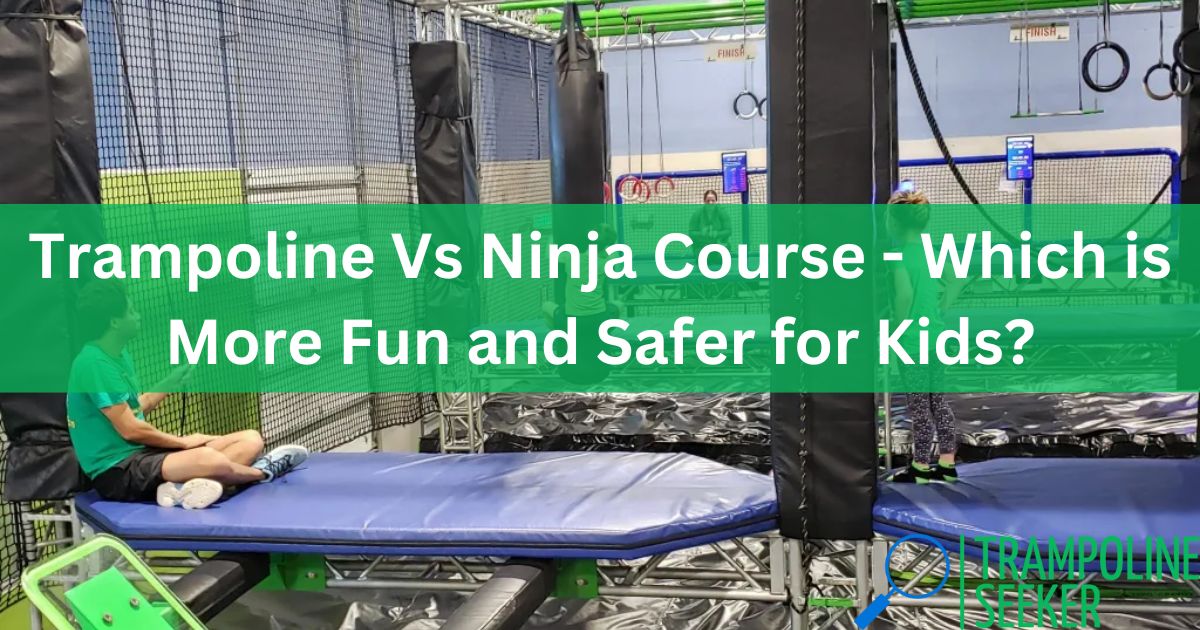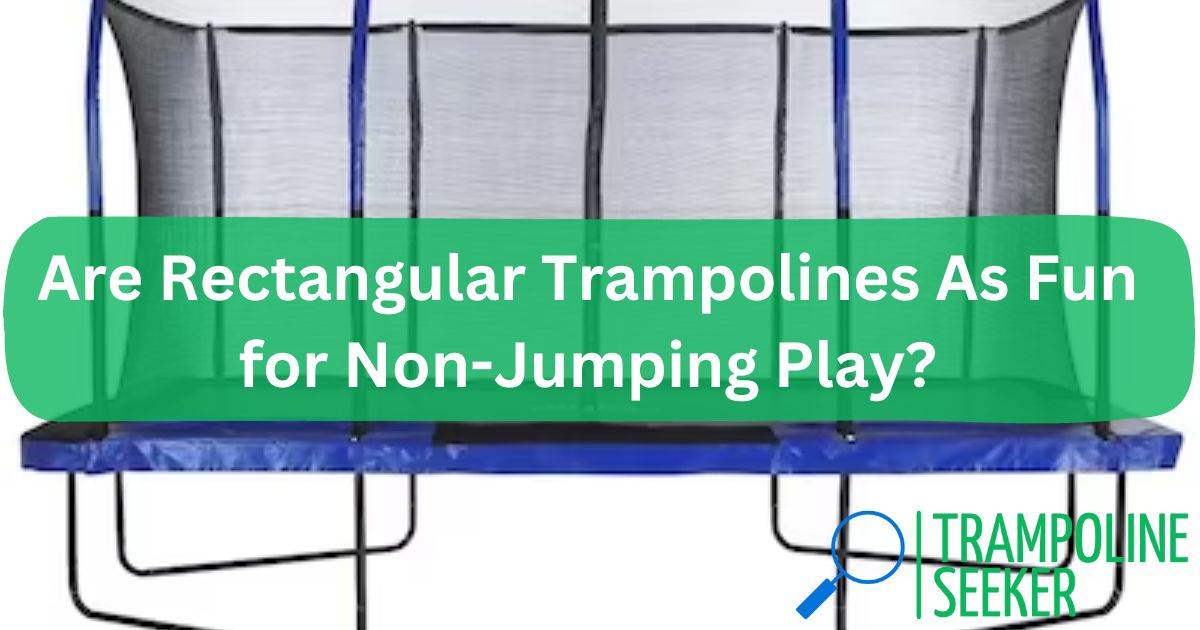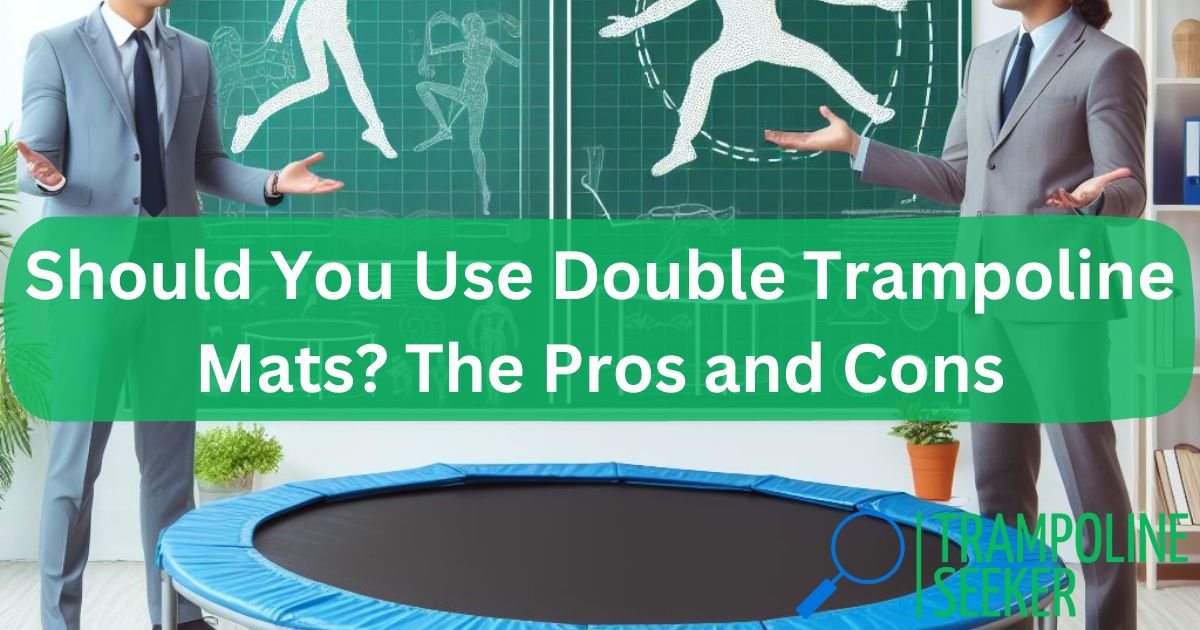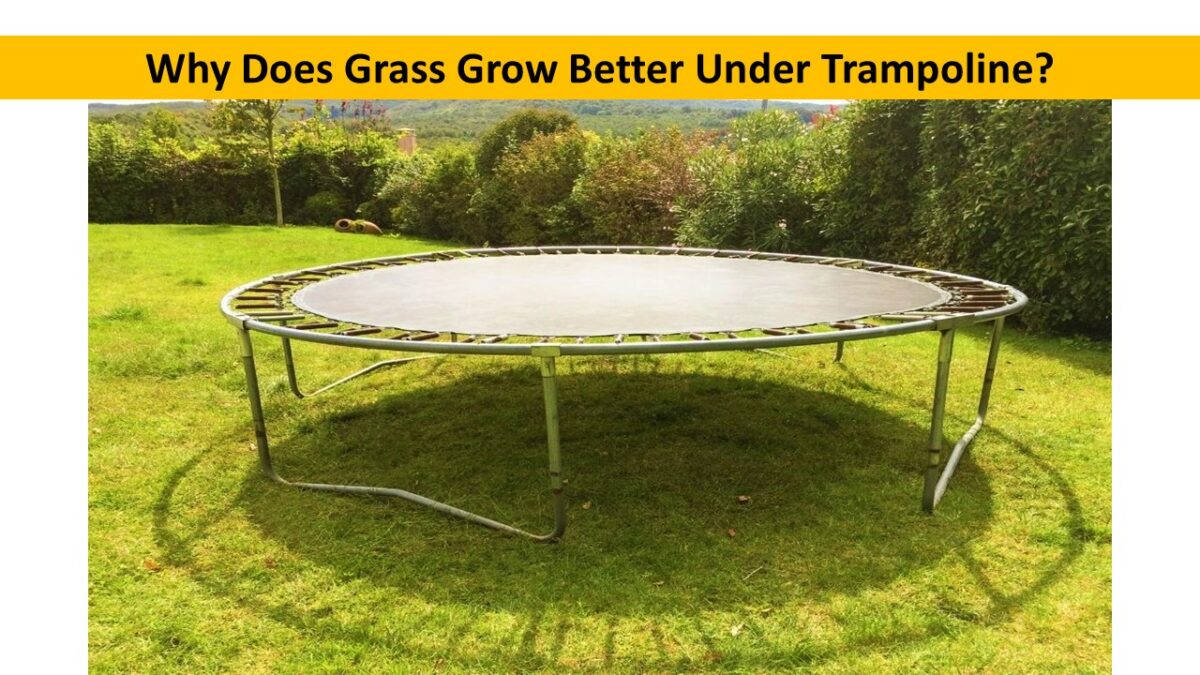How to Anchor Trampoline On Artificial Grass? Sandbags are the best way to anchor a trampoline on artificial grass if you don’t want to damage the artificial grass. If you don’t like to use sandbags, another option is to use wind stakes. But obviously, it will make holes in artificial grass.
If you also don’t want the artificial grass to have holes, you can put a cover over the sandbags. One, they won’t leak over time, and two, they look good too.
Actually, I have done this. I used sandbag covers of different designs that matched the chairs, table, and another décor on my lawn. Honestly, I really liked it.

Aside from this, wind stakes are an ideal option.
First, you don’t have to spend on sandbag covers.
Secondly, they are very inexpensive.
Another of the most effective options is Screw-in Trampoline Tie-Down Kits (Auger-Style Anchors).
Let’s see how they can be used most effectively to anchor a trampoline on artificial grass.
Related Articles:
| Can Dogs Go on Trampolines |
| Can a Trampoline Stay Out in the Winter |
| Trampoline Lights |
| How to Measure a Trampoline |
| How to Put a Trampoline in the Ground |
Anchor a trampoline on Artificial Grass using Sandbags
Using sandbags is one of the best ways to anchor a trampoline to artificial grass. Simply fill the space between the trampoline and the ground with sandbags, then carefully place your trampoline on top of them.
I am not saying to fill the entire space, but you should definitely keep two sandbags on top of each other.
As part of the process of anchoring the trampoline, you should make sure that the trampoline is level with the ground before you begin anchoring it.
If it’s not level, it will bounce higher off your artificial grass than off a hard surface (like concrete), which could cause damage or injury. You may also have a knee injury.
Screw-in Trampoline Tie-Down Kits (Auger-Style Anchors)
A trampoline tie-down kit is essential to ensure that your trampoline is anchored correctly when exposed to high winds.
As its name suggests, this system is basically a way of securing the trampoline to the ground while it is in use, using a combination of straps and metal ‘corkscrew’ stakes to secure it in place.
We recommend using one when the wind picks up, even though it’s not necessary to keep one nearby all the time.
I am not going to explain step by step because there are many types of trampoline anchoring kits. So, the way to use different kits will be different and mentioned in the manual.
No doubt having an anchor down kit installed will give you a great deal of peace of mind, and since it is hardly noticeable after installation, it can stay in place all year round.
Important Information
Many people use heavy weights or sandbags to anchor their trampolines on artificial grass. Although this is a viable option, it may not be the best choice in all cases. One common problem is that trampoline anchors can damage the surface of the artificial grass.
So, be very careful when anchoring your trampoline to artificial grass. Another possible problem is that the sandbags could shift and come loose over time. So, check the sandbags regularly and ensure they are firmly in place before jumping on your trampoline.
Attaching trampolines securely to the ground is made easier with the use of screw-in trampoline tie-down kits (Auger-Style Anchors). Depending on the size of your trampoline, they can be purchased in a variety of different sizes. Although they are relatively inexpensive, they are an effective and reliable way to anchor a trampoline.
There are several different types of Auger-Style Trampoline Tie-Down Kits:
Thick-wall anchors: These screws have a thick wall that prevents them from being easily removed. They are most commonly used with round trampolines with a diameter of 48 inches or larger.
Thin-wall anchors: These screws have a thin wall that prevents them from being easily removed. They are most commonly used with square trampolines that have a side length of 24 inches or longer.
Screws/screw anchors: These screws/screw anchors can be used for both square and round trampolines. They are typically steel, but some models are made from plastic.


